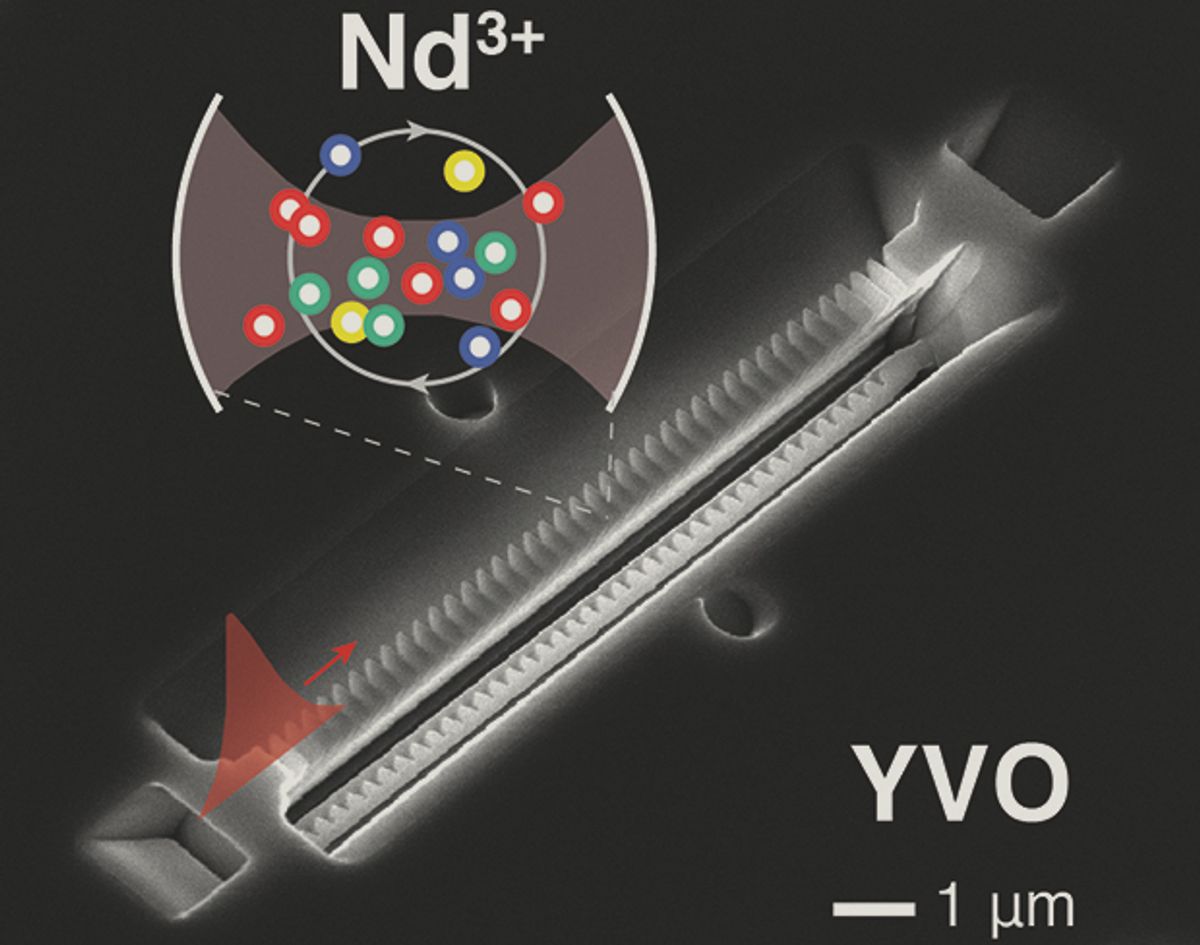The prospects for optical quantum networks—in which information is transmitted by encoding data using the quantum state of photons—has been on the upswing lately, leading to some commercial quantum photonics products currently on the market.
However, optical quantum memory, which is one of the key technologies for the realization of widespread, optical, quantum networks, remains a sticking point. Optical quantum memory is a device that takes a photon and encodes it with information. Unfortunately, the devices developed to date have been too large and inefficient to operate in a chip-scale quantum device.
Now an international team of researchers led by a group from the California Institute of Technology (Caltech) has managed to create an optical quantum memory device that is over 1000 times smaller than anything previously available. Not only is the device significantly smaller than anything that has come before it—ensuring will fit into on-chip devices—it is capable of on-demand retrieval of the stored data.
In research described in the journal Science, researchers from Caltech, the National Institute of Standards and Technology (NIST), and the University of Verona, Italy have collaborated on the development of a nano-sized cavity containing neodymium. That cavity in turn creates a crystal cavity that enhances the interaction between light and the cavity’s neodymium at the single photon level.
The device operates by storing the photons in an ensemble of rare-earth (or lanthanide) neodymium atoms. The atoms themselves are trapped in an yttrium orthovanadate (YVO) crystal, according to Andrei Faraon, an assistant professor at Caltech and co-author of the research, in an e-mail interview with IEEE Spectrum.
“The ensemble is small, and by itself would not be able to absorb the photons,” says Faraon. “This is why we make an optical cavity (resonator) in the YVO crystal—that enhances the interaction between the atoms and the light, so the absorption of photons by the atoms becomes efficient.”
To store the photons, first the ensemble of atoms is prepared in a special way using a sequence of laser pulses so that their ensuing absorption spectrum is shaped like a comb. This preparation ensures that after the photons are absorbed, they are automatically re-emitted after 75 nanoseconds.
While the photons are absorbed in the atoms, the researchers apply another pair of laser pulses that can delay the re-emission by up to 10 nanoseconds, depending on the intensity of the applied pulses. This provides the device its ability of on-demand retrieval of data.
The device that the researchers have developed is not just a memory device, but is specifically a quantum memory device. To give the device its quantum mechanical properties, photons are stored and shaped as two pulses: early and late pulses. Quantum mechanically the photon exists in a superposition of early and late pulses.
The researchers were able to demonstrate that after the photon pulses are stored, the photon wavefunction (the core quantum description of a system which is used to calculate the probability of a certain measurement) of the retrieved photon pulses very accurately resembles the wavefunction of the stored photon pulses. Translation: the memory now possesses high fidelity.
While the actual operation of the device in terms of quantum mechanics is similar to how previous quantum memory devices have operated, this device is 1000 times smaller than any previous devices. “Also, those previous devices did not have the capability for on-demand retrieval,” adds Faraon.
The key to the device is the use of the nano-cavity that makes it possible to store the information in a very small volume. Also, the on-demand retrieval is enabled by the fact that the device is so small and the interaction between the rare-earth atoms and the photons is enhanced.
If the device were to be used commercially, it would need to be made with a more scalable fabrication process, according to Faraon. “Currently we are using ion beam milling. That is a rather slow and serial process,” he adds.
In continuing research, Faraon and his colleagues plan to increase the memory efficiency and the storage time.
Dexter Johnson is a contributing editor at IEEE Spectrum, with a focus on nanotechnology.



